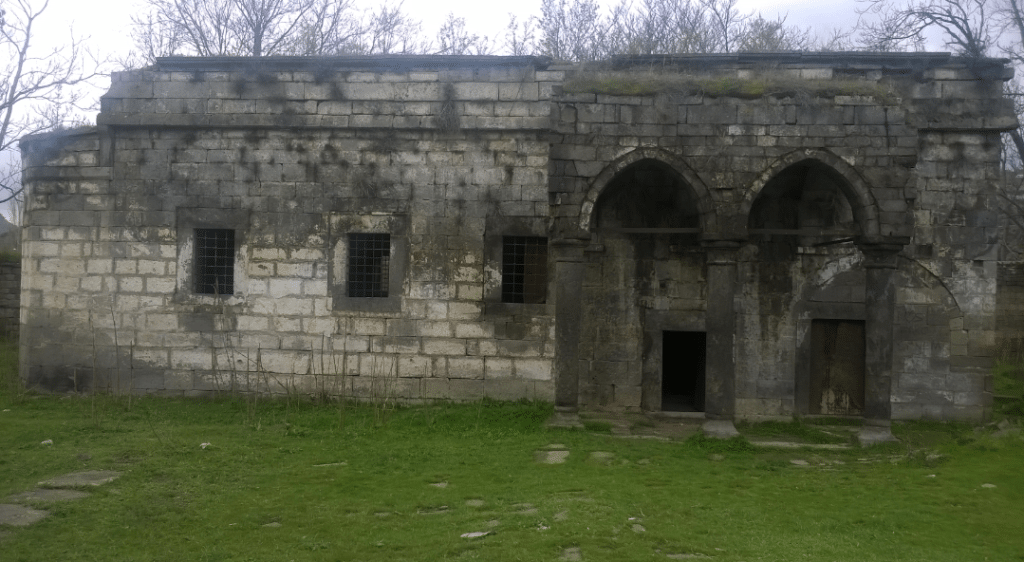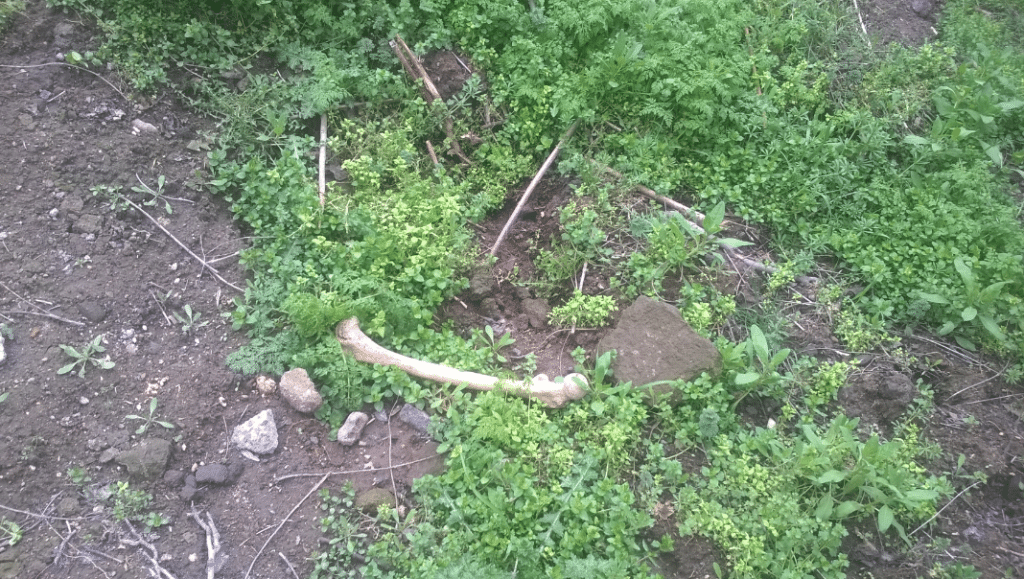




 |
 |
 |
 |
 |
VIP Forums Muzblog Chat Games Gallery. Ôîðóì, ìóçäíåâíèêè, ÷àò, èãðû, ãàëëåðåÿ. |
||||
|
||||||||
| Diaspora News and events in Armenian and other diasporas. |
 |
On the Road to Exile: 100 Years Later in Kayseri |
LinkBack | Thread Tools | Display Modes |
|
|
#1 (permalink) |
|
Top VIP VIP Ultra Club
Join Date: Jan 1970
Posts: 12,055
Rep Power: 67
 |
Special for the Armenian Weekly
Kayseri While moving forward by rail to the Kayseri provincial borders, we take a two-day break to briefly explore the greatest Armenian Kingdom that ever existed, located at the foothills of Mt. Parsegh (known today as Ali). Kayseri had a robust Armenian presence up until the 1970’s. Today, there are no active Armenian churches in the city, except for the Krikor Lusavorich Church located in the city center. Armenians also played a role in establishing the fame of the Kayseri sausage and pastirma. In 1915, there were more than 50,000 Armenians living in this large trade city; in 1965, it is said that 130 families still remained. Now, however, there are only a few Armenians left. The city has an important place in Armenian religious history as well. In its heyday, it was Central Anatolia’s most important city. In 250 A.D., Kayseri had a population of 400,000; it was where St. Krikor grew up, was educated, and converted to Christianity. There are also a number of famous Armenian families, like the oil baron family of the Gulbenkians, who lived here. Their house is currently in use as the “Konak Restaurant.” The employees of this restaurant know and explain that the building used to be the home of some Armenian family, but give no name. The people of Kayseri and the surrounding villages are not as reluctant to talk about the old days as the inhabitants of some of the other cities. Vartan Village, Now ‘Vatan’ Our first stop in Kayseri is a village that has not seen many visitors: Vartan Village. Or, as it’s now known, “Vatan” (Motherland) village. The people living in the village don’t remember the old name. Or they don’t want to remember. But they know. The old settlement is now in ruins and new buildings rise in the village. Houses and streets are carved into the rocks, and in between animal shelters there are excavations going on. Everywhere one looks there are holes. We don’t know if these holes were dug in order to find treasure, or to protect farm animals from the cold. But at least the holes carved inside the houses tell us that treasure hunters once stopped here. No one is in the village except for a few households. From a window, someone yells at us, “They’re using this place as a summer retreat now.” The Treasury Reclaimed the Church, but… After Vartan, we continue onto Efkere Village (known now as “Bahceli”). Mt. Ali (Parsegh) always helps remind us of our location. A majestic church greets us there. The dome has collapsed. We can gather it is an Armenian church from the Armenian “E” letter on the front door. We wander around the back. After we stop to take pictures of the dome and walk back to the front, we find an iron gate where the old door used to be. On top of this gate sits a key. Excited that we can actually enter the church, I turn the key, but the door doesn’t open. I take the key out and try again, but no luck. I’m disappointed. I learn from the people in the house next door that the village children put this here in order to play a prank. I was probably the only one who was fooled by this practical joke. We continue to wander around the church, hoping to find someone who can unlock the door for us. I see a child watching us from afar and ask him where his mother is. He goes into the house and calls her out, “Mom, come and tell them what happened to the church!” The woman leaves the food cooking on the stove and comes to us and says: “The Treasury came and reclaimed the church, and locked the door. And the key was sent to them.” In the past, one of her relatives was living inside the church, she says, but later “someone wrote about it, and they came and closed it up.” She seems unhappy about the incident. In the end, her relatives lost their home. She adds, “They dug inside the church; it was plundered.” It’s clear that treasure was searched for. But now the church is empty and abandoned. From what I could see by gazing through a hole in the door, the church was used as a garbage dump for some time. The treasury took it from the villagers, but there is no sign of any intention to begin restoration work. At one point in the conversation, the woman says, “My food will overcook,” and runs back inside. She does not come back out. Armenians with a Machine that Skins Dogs! Now we’re in the village of Dersiyak-Kayabag. While walking from the village square to the outer streets, I feel like I’m walking through the non-Muslim quarters of Diyarbak?r. Narrow streets, interesting houses with bay windows… At the end of the road there is an old lady sitting on her rooftop. It’s clear she wants to speak with us. We ask her where the church is. She points to the Greek Church across. She tells us how her mother explained to her that there used to be many Greeks living here, and how they were good neighbors. “Sometimes some people come over and ask questions, papers in their hands. But my mother used to say that those who left were far better neighbors. They were scared. The men in their families used to be rarely at home, she said, [so the women] would withdraw to their homes in the evening and wouldn’t go out. But the people of the village would protect them.” Memories of Armenians are rife with gruesome events. Although she talks about the presence of only a few families in the neighborhood, we think that the number is far larger, given her account. Then, she says, “Armenians brought a machine. Somebody from the village saw it. The machine they brought down there is used for skinning dogs. They were supposed to throw people into that machine. Every year, on April 15 I think, they are doing stuff there. Why are they digging [at the past]? As if they haven’t done anything wrong themselves. When they do it, it is OK.” The conversation shows us how the national education policies of the Turkish Republic have left indelible marks in the minds of even the eldest in the society. Then, we get up and lose ourselves in the back streets of Dersiyak. ‘Tavlusun Village Education and Aid Society’ There are many stories to hear and places to see in Kayseri. We choose the Surp Toros Church on the Tavlusun hillside as our last stop. “Yes, yes. Armenian and Greek [churches] are side by side,” says the shepherd we ask for directions. We ask if there are any Armenians left and he replies, “No, they are gone.” His response is accompanied by a smile. Tavlusun Village is now called Ayd?nlar. The first monument we see upon entry to the village is a Greek church. The garden has been plundered by treasure hunters. We see human bones in what we think could be the grave of a priest. My old companion’s heart goes out to the deceased, and he digs the soil to bury the scattered bones underneath. Two large monasteries stand side by side. Surp Toros Church is right next to the Greek church. There is a signboard by the Tavlusun Village Education and Aid Society hanging on the gate. Apart from the Krikor Lusavori? Church in the center of Kayseri, this is the only place where Armenian traces are not hidden, are on display even. The village society needs to be congratulated and supported. The murals inside Surp Toros are largely damaged. All is rubble except for a few legible inscriptions on the ceiling. There is a deep hole where what must have been the candle holders on the right side of the altar once stood. Treasure hunters haven’t skipped this part either. ‘Cherkessized’ Armenians There are innumerable destinations in Kayseri to be discovered. But the conversations in a Cherkes breakfast hall called Gubate in the city center opened up a new horizon for me—and doubtless, to many other Armenians. The Armenians rescued by the inhabitants of the Cherkes village and the “Cherkessized” Armenians are still around today, I was told. This is totally new information. I’m sure this is a story that’s been unheard by even most of the historians studying the Armenian Genocide. I promise myself to visit the village next time I’m on the road. Then I set off with a huge saddlebag of stories and emotions.  The Greek monastery in Tavlusun (Photo: Aris Nalci) The Greek monastery in Tavlusun (Photo: Aris Nalci) ‘We see human bones in what we think could be the grave of a priest.’ (Photo: Aris Nalci) ‘We see human bones in what we think could be the grave of a priest.’ (Photo: Aris Nalci)Special for the Armenian Weekly Kayseri While moving forward by rail to the Kayseri provincial borders, we take a two-day break to briefly explore the greatest Armenian Kingdom that ever existed, located at the foothills of Mt. Parsegh (known today as Ali). Kayseri had a robust Armenian presence up until the 1970’s. Today, there are no active Armenian churches in the city, except for the Krikor Lusavorich Church located in the city center. An Armenian map of Gesaria (Kayseri) (Efkere in red box) Armenians also played a role in establishing the fame of the Kayseri sausage and pastirma. In 1915, there were more than 50,000 Armenians living in this large trade city; in 1965, it is said that 130 families still remained. Now, however, there are only a few Armenians left. The city has an important place in Armenian religious history as well. In its heyday, it was Central Anatolia’s most important city. In 250 A.D., Kayseri had a population of 400,000; it was where St. Krikor grew up, was educated, and converted to Christianity. There are also a number of famous Armenian families, like the oil baron family of the Gulbenkians, who lived here. Their house is currently in [...] Special for the Armenian Weekly Kayseri While moving forward by rail to the Kayseri provincial borders, we take a two-day break to briefly explore the greatest Armenian Kingdom that ever existed, located at the foothills of Mt. Parsegh (known today as Ali). Kayseri had a robust Armenian presence up until the 1970’s. Today, there are no active Armenian churches in the city, except for the Krikor Lusavorich Church located in the city center. An Armenian map of Gesaria (Kayseri) (Efkere in red box) Armenians also played a role in establishing the fame of the Kayseri sausage and pastirma. In 1915, there were more than 50,000 Armenians living in this large trade city; in 1965, it is said that 130 families still remained. Now, however, there are only a few Armenians left. The city has an important place in Armenian religious history as well. In its heyday, it was Central Anatolia’s most important city. In 250 A.D., Kayseri had a population of 400,000; it was where St. Krikor grew up, was educated, and converted to Christianity. There are also a number of famous Armenian families, like the oil baron family of the Gulbenkians, who lived here. Their house is currently in [...] [img][/img] More... |
|
|

|
|